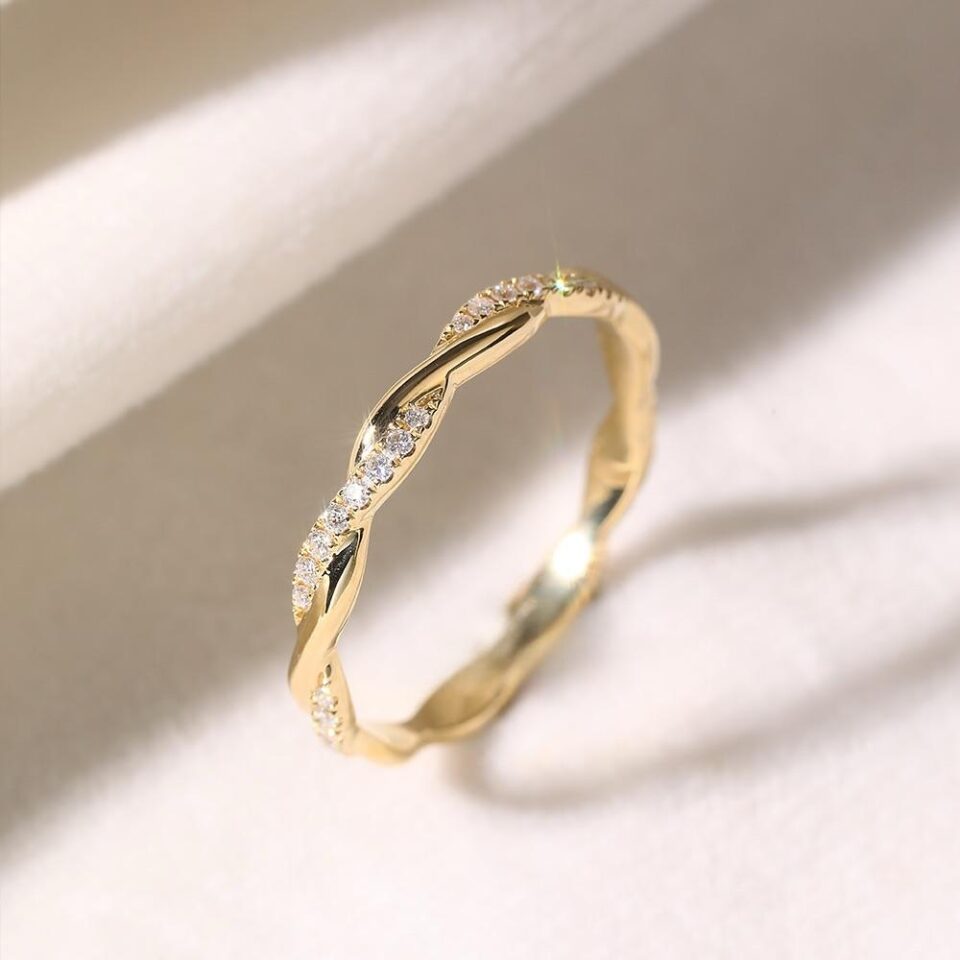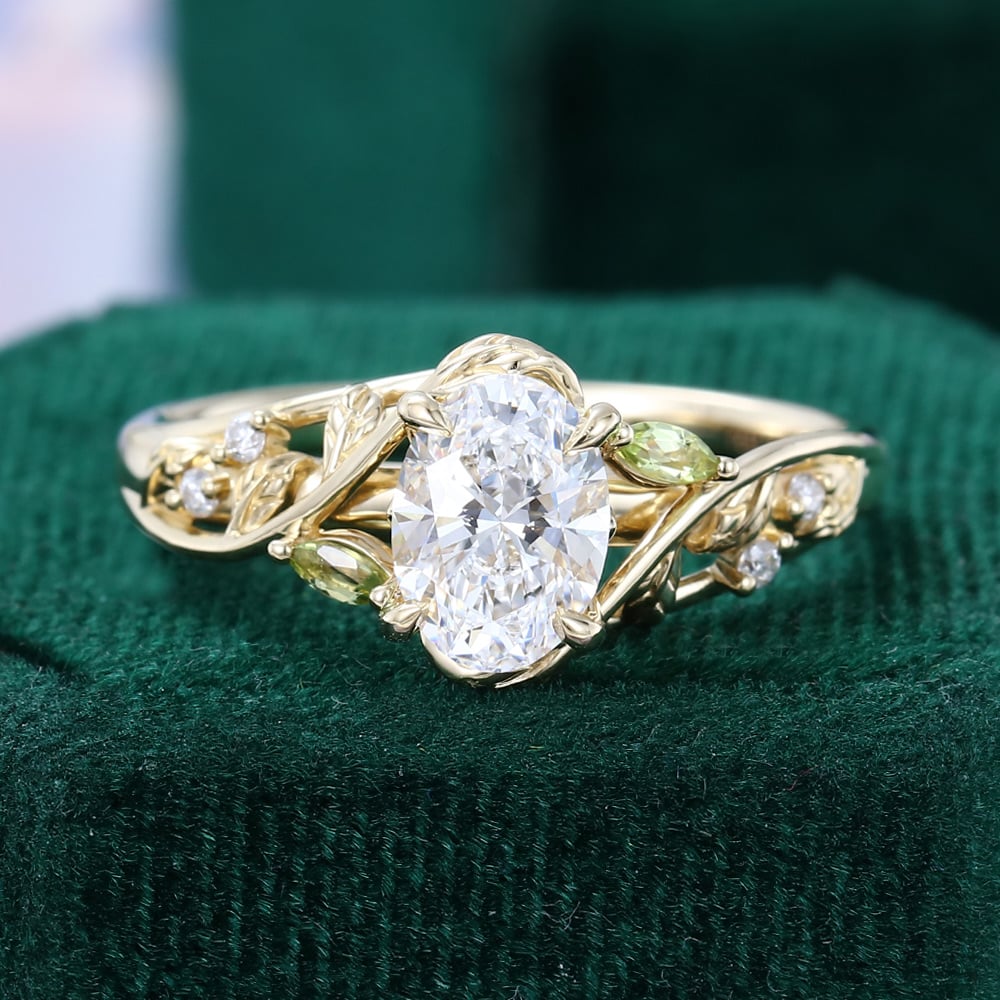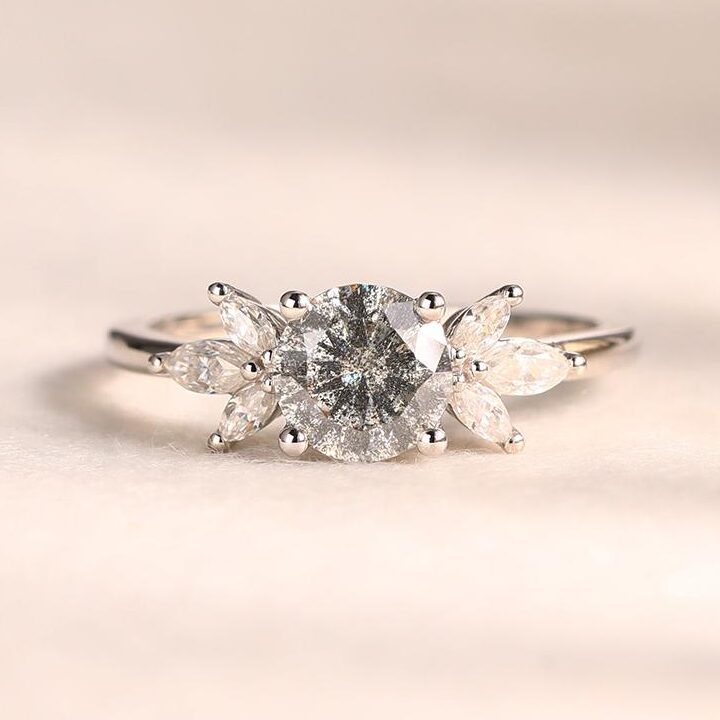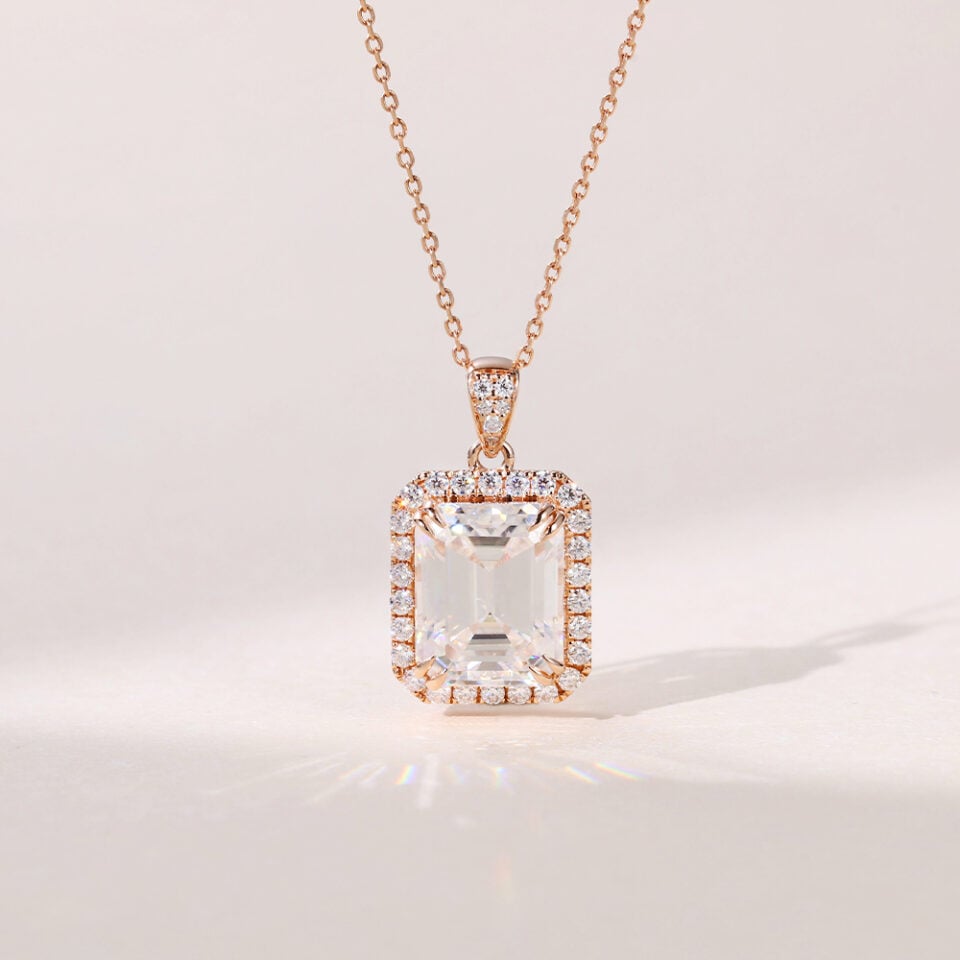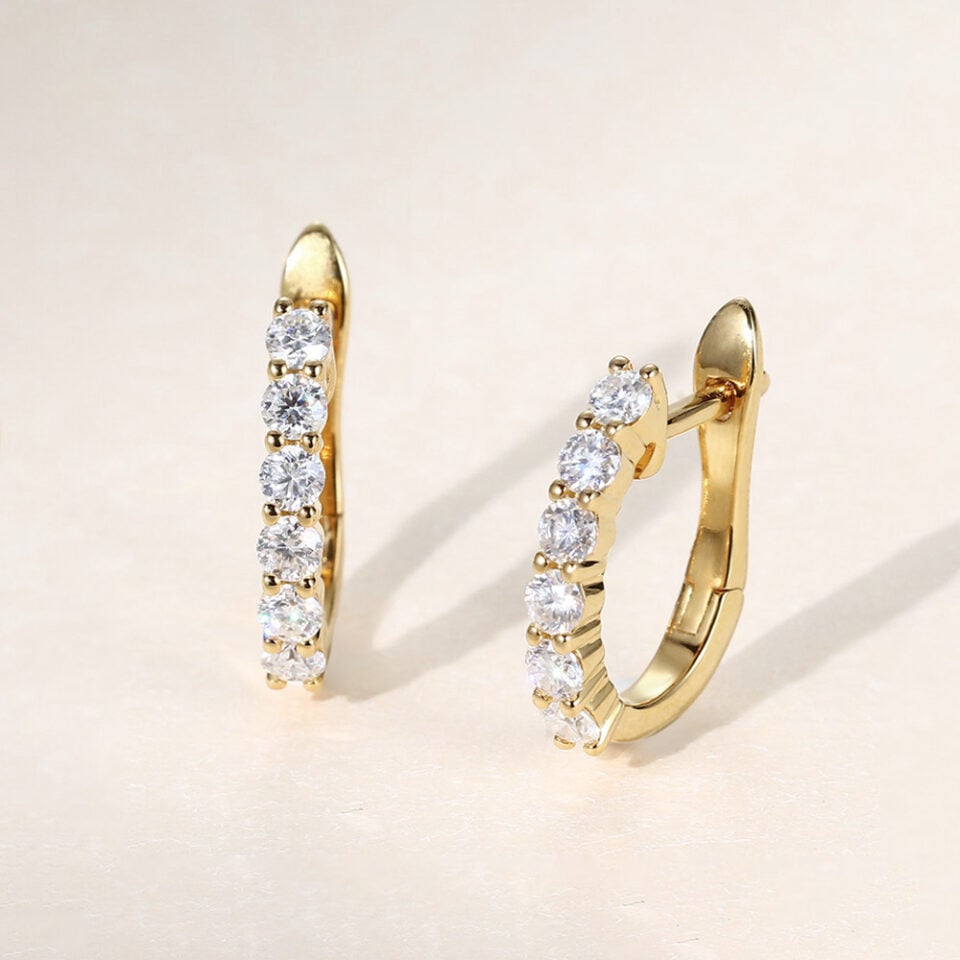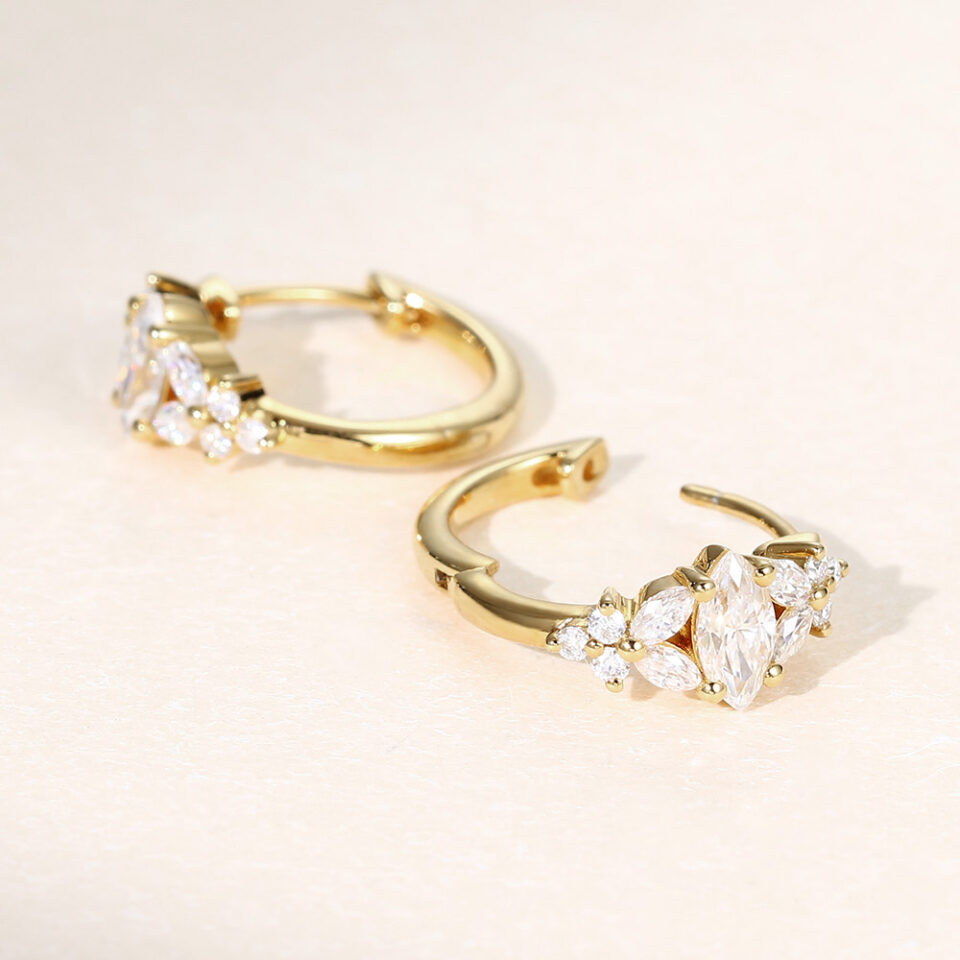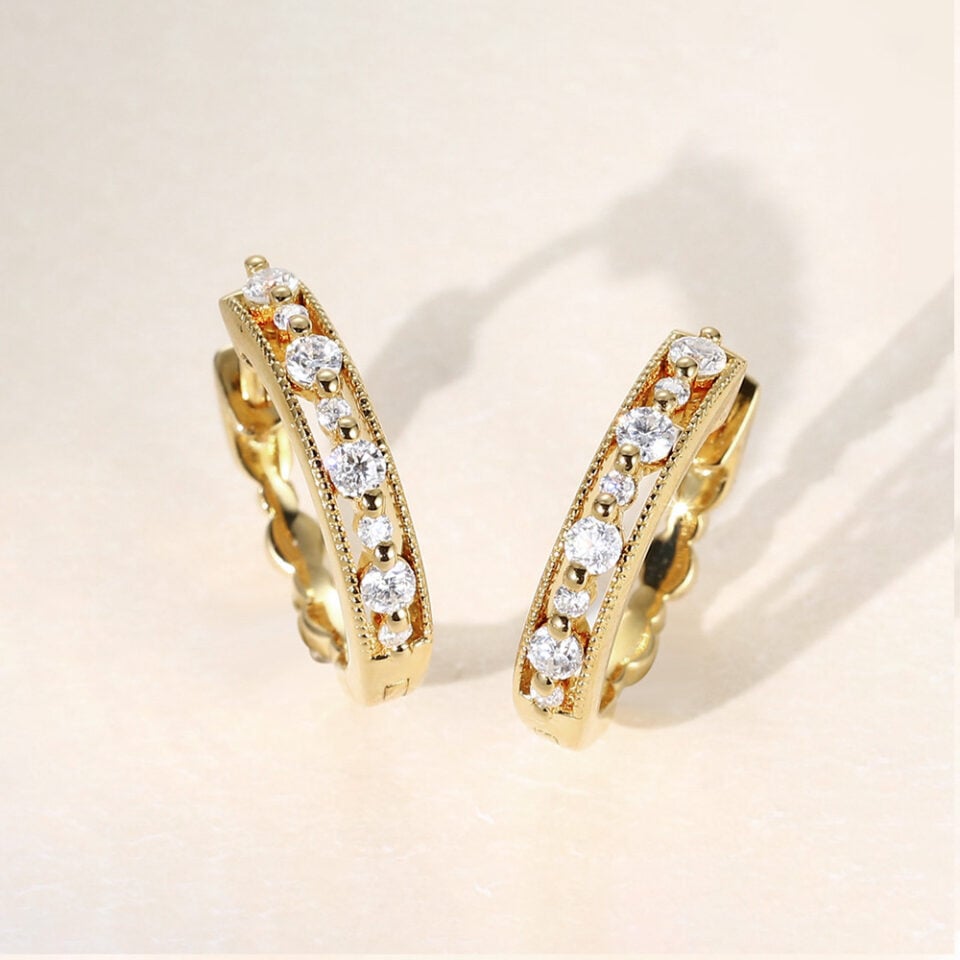April is a month of renewal and vitality, a time when nature awakens with boundless energy. In this hopeful season, nothing shines brighter than the dazzling diamond. As the birthstone of April, the diamond, with its unmatched inner brilliance, is one of the world’s most sought-after and treasured gemstones. Those fortunate enough to be born in April can embrace this radiant gemstone as their birthstone, symbolizing purity and strength.
This article presents a comprehensive exploration of the April birthstone – the diamond – from its significance as the April birthstone to its rich history and cultural depth, as well as how to appreciate and care for this precious gemstone.
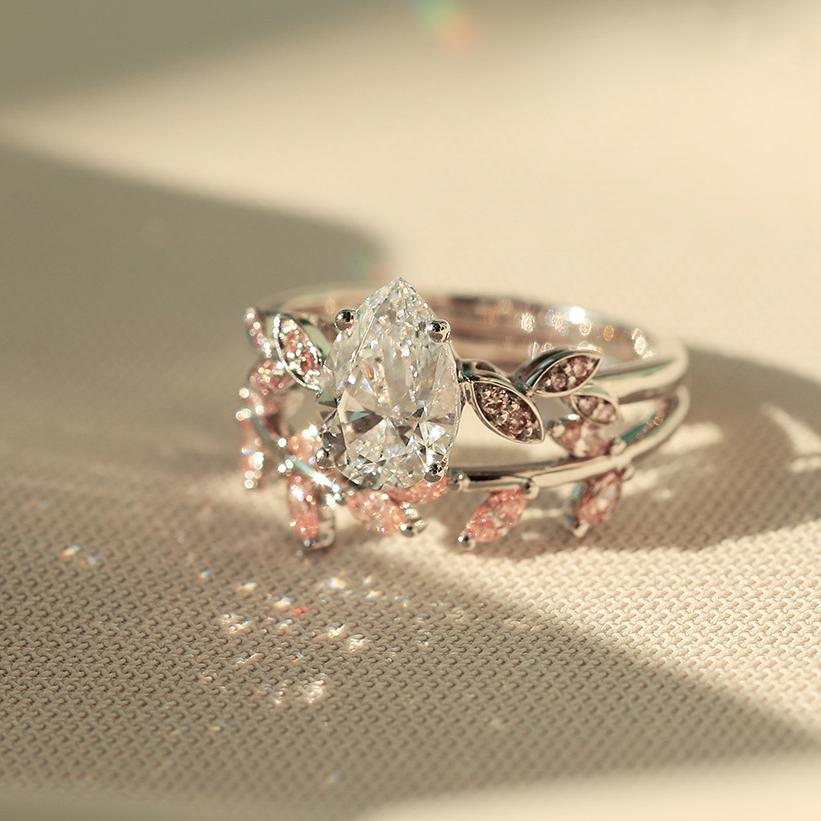
Table Of Contents:
- Why Are Diamonds the Birthstone of April?
- April Birthstone History
- April Birthstone Symbolism
- April Birthstone Metaphysical Energy
- April Birthstone Color
- April Birthstone Durability
- Where Are April Birthstone Diamonds Found?
- April Birthstone Cleaning & Care
- April Birthstone Value
- April Birthstone Jewelry Ideas
- FAQs April’s Birthstone
Why Are Diamonds the Birthstone of April?
Historical Origins and Symbolic Connection
- Ancient Roman Origins: “April” is derived from the Latin word aperire, meaning “to open”, symbolizing the renewal of life in spring. The hardness and purity of the diamonds perfectly reflect the resilience and hope associated with April’s rebirth.
- Evolution of the Birthstone System: In 1912, the Jewelers of America officially designated the diamond as the birthstone for April.
Cross-Cultural Beliefs About April Diamond
- Astrological Connection: April spans Aries (March 21 – April 19) and Taurus (April 20 – May 20). The fiery brilliance of diamonds aligns with Aries’ bold nature, while their stable and enduring qualities resonate with Taurus’ practicality.
- Eastern Symbolism: In Indian Vedic culture, wearing a diamond enhances the energy of Venus for those born in April, improving artistic perception and emotional harmony.
April’s Birthstone Origin & History
The name “diamond” originates from the Greek word adamas, meaning “invincible” or “unbreakable”, reflecting its exceptional hardness.
Diamonds were first discovered in India in the 4th century BC. Ancient Indians believed that diamonds were “tears of the gods” or fragments of lightning. In Sanskrit, diamonds are called vajra, meaning “invincible weapon,” and were often used as protective talismans.
In the early 18th century, Brazil emerged as a new hub for diamond mining, introducing these sparkling gems to international markets.
The late 1860s brought a turning point with the discovery of diamonds in kimberlite pipes near Kimberley, South Africa. This moment marked the rise of the modern diamond industry. Among the most iconic sites is South Africa’s Premier Mine, renowned for producing some of the world’s largest diamonds. Even today, South Africa’s Premier diamond heritage continues to shine, supported by rich deposits across other African nations.
Diamond Jewelry Key Historical Milestones:
- Medieval Europe: As world trade expanded, diamonds were introduced to Europe and, because of their rarity, became a symbol of power and status among royalty and aristocracy.
- 1477: Archduke Maximilian of Austria gave Mary of Burgundy a diamond ring – the first diamond engagement ring (on record) – and started the tradition of diamond engagement rings.
April Birthstone Symbolism
As the traditional birthstone of April, the diamond carries the brilliance and renewal of spring, symbolizing resilience, purity, and eternal love. Diamonds are also a symbol of commitment, making them a popular choice for engagement rings and other meaningful jewelry. Different colored fancy diamonds come with additional unique meanings:
- Yellow Diamond: Symbolizes happiness and friendship.
- Pink Diamond: Represents joy, romance, and creativity.
- Blue Diamond: Signifies tranquility and wisdom.
- Green Diamond: Symbolizes natural vitality.
- Black Diamond: Represents mystery and power.
- Salt and Pepper Diamond: Symbolizes perfection in imperfection.
April Birthstone Metaphysical Energy
Since ancient times, many civilizations have believed that diamonds possess mystical powers, symbolizing strength and protection. Wearing a diamond is thought to enhance relationships and inner strength. It is said to bring balance, clarity, and abundance. Some even believe diamonds ward off evil and have healing powers. Others associate them with longevity, beauty, and happiness. These beliefs are deeply rooted in ancient cultures:
- Greek Mythology: Diamonds were believed to be fragments of Ares, the god of war, granting the wearer courage.
- Hinduism: Diamonds are linked to Venus (Shukra), symbolizing spiritual awakening.
- Ancient Egypt: Egyptians believed diamonds were fragments of stars, bringing them closer to the gods and giving protection.
April Birthstone Color
Traditional diamonds typically range from colorless to light yellow (i.e., D-Z grading scale). However, diamonds can also come in a stunning array of colors beyond the Z grade, including brown, pink, blue, green, black, and even red. These colors result from trace elements and structural irregularities during formation – for example, blue diamonds contain boron, while yellow diamonds contain nitrogen.

As a birthstone, fancy-colored diamonds provide April-born individuals with a variety of choices, allowing them to express their personality through their preferred color.
April Birthstone Durability
Diamonds exhibit exceptional hardness, serving as the benchmark for the Mohs hardness scale with a perfect score of 10. Their extreme durability led people to historically use them as cutting tools and for engraving metals. Their high hardness makes them resistant to the scratches and wear and tear of everyday use, ensuring that they retain their brilliance over time. This durability makes diamonds an ideal choice for jewelry, especially engagement rings and other frequently worn accessories.
Where Are April Birthstone Diamonds Found?
The main diamond-producing regions include:
- Africa: The most famous sources are Botswana, South Africa, the Democratic Republic of Congo, Angola, and Namibia.
- Australia: Best known for colored diamonds, especially from the Argyle Mine in Western Australia.
- Russia: Currently the world’s largest producer, with major deposits in the Yakutia region of Siberia.
- Canada: An emerging source, with notable mines such as Ekati and Diavik in the Northwest Territories.
April Birthstone Cleaning & Care
- Cleaning Methods: Diamonds are highly stable and resistant to almost all acids. The simplest way to clean them is to use warm water with a mild soap/detergent and gently scrub with a soft-bristle brush. Ultrasonic and steam cleaning are also effective but should be avoided for diamonds with fractures.
- Maintenance: If your diamond loses its brilliance and cannot be restored through simple cleaning, you can use a solution of one part ammonia to six parts water to bring back its shine (be sure to rinse thoroughly afterward).
- Storage Recommendations: Store your diamond separately in a soft fabric pouch to prevent it from scratching other jewelry.
April Birthstone Value
Diamonds hold both investment and heirloom value. Their rarity and durability make them a reliable store of value, even during economic fluctuations.
A diamond’s value is determined by the 4Cs:
- Carat (Weight) – The larger the carat, the higher the value.
- Clarity – The fewer inclusions, the more valuable the diamond.
- Color – For white diamonds, the closer to colorless (D-Z scale), the higher the price; for fancy-colored diamonds, the more vivid the hue, the greater the value.
- Cut – A higher cut grade enhances brilliance and value.
For example, a 1-carat, Excellent cut, H color, VS2 clarity diamond is valued at approximately $10,000.
Check out our Diamond 4Cs Guide to learn more.
How to Identify a Genuine April Birthstone Diamond: Must-Know Tips for Beginners
- Fog Test: Breathe on the diamond – real diamonds will disperse the fog instantly, while imitations like cubic zirconia will retain it longer.
- Newspaper Test: Place the diamond face down on a newspaper – due to its high refractive index, a real diamond will make the text appear unreadable (only applicable to standard round brilliant cuts).
April Birthstone Jewelry Ideas
April birthstones are widely used in jewelry and are very popular, especially as engagement and wedding rings. Here are our selections of April birthstone jewelry!
April Birthstone Rings
Twisted Design Diamond Wedding Ring
The twisted design is unique and layered, with the diamond sparkling under the light, exuding elegance in its simplicity.
Unique Wavy Lab Diamond Half Band
The band features a flowing wave shape, with dynamic and natural wave-like lines, accented by diamonds to enhance its brilliance.
Leaf Design Lab Grown Diamond Ring
Inspired by leaves, the combination of peridot and diamonds creates a nature-inspired look, making it a perfect choice for brides.
Marquise Cut Lab Blue Dainty Three Stone Ring
The marquise-cut blue lab-grown diamond takes center stage, complemented by small side stones for a sleek and elegant design.
Oval Cut Lab Grown Pink Diamond Ring
The soft, romantic hue of the pink diamond, combined with a pavé setting, enhances the ring’s brilliance, embodying sweetness and sophistication.
Round Salt and Pepper Diamond Promise Ring
The unique texture of the salt and pepper diamond gives it a distinctive charm, paired with a marquise-cut diamond for a bold and stylish look.
1.5CT Oval Lab Diamond Twisted Band Ring
The large, eye-catching yellow center diamond stands out, while the twisted band adds an extra touch of design, making the ring both luxurious and unique.
April Birthstone Necklaces
Crescent Solitaire Pendant For Women
A delicate pendant with a crescent-shaped setting holding a single, sparkling diamond, suspended on a dainty chain. Ideal for adding a touch of elegance.
Diamond and Black Onyx Pendant Necklace
Features a central diamond surrounded by a halo of smaller diamonds, with a black onyx accent. The contrast of colors creates a striking and sophisticated look.
Emerald Cut Diamond Halo Pendant Necklace
showcases an emerald-cut diamond as the centerpiece, encircled by a halo of diamonds. The geometric shape and sparkling halo offer a refined and luxurious style.
April Birthstone Earrings
Shared Prong Huggie Hoop Earrings
Huggie hoop earrings with diamonds set in shared prongs. They are compact, stylish, and add a touch of sparkle to any outfit.
Blossom Cluster Huggie Hoop Earrings
Huggie hoops adorned with a cluster of diamonds in a blossom-like design. These earrings bring a feminine and romantic charm.
Beaded Milgrain Design Huggie Hoop
Huggie hoops featuring a beaded and milgrain-detailed design, with set diamonds. They combine classic craftsmanship with a hint of sparkle.
Explore more April birthstone rings, necklaces, earrings, or customize a piece of unique birthstone jewelry at MollyJewelryUS.
FAQs About April Birthstone
Does April Have Only One Birthstone?
Yes. While April’s only official birthstone is the diamond, it comes in a variety of colors, offering multiple options for those born in this month. (If you’re concerned about the high price of fancy-colored diamonds, you can consider lab-grown diamonds, which have the exact same physical and chemical properties as natural diamonds.)
Are There Alternatives to April Birthstone?
Absolutely. If you’re looking for a diamond-like appearance at a more affordable price, we recommend lab-grown diamonds, moissanite, white sapphire, and white topaz (listed in order of best alternatives).
Do Lab-Grown Diamonds Count as April Birthstone?
Yes. Lab-grown diamonds are real diamonds, and their only difference lies in the formation process. People fully recognize them as April’s birthstone. Read Natural Diamonds vs. Lab Diamonds for more details.
What Is the Cheapest Diamond Color?
The price of a diamond depends on various factors, so there isn’t a single “cheapest” color. However, compared to fancy-colored diamonds, white diamonds are generally more affordable (depending on specific quality and grading).
What is the Modern birthstone for April?
It is still the diamond. April has only one birthstone: the diamond. If you find natural diamonds too expensive, you can consider lab-grown diamonds, moissanite, white topaz, or white sapphire as alternative birthstones.
Related Readings: January Birthstone, February Birthstone, March Birthstone, May Birthstone, June Birthstone, July Birthstone, August Birthstone, September Birthstone, October Birthstone, November Birthstone, December Birthstone
